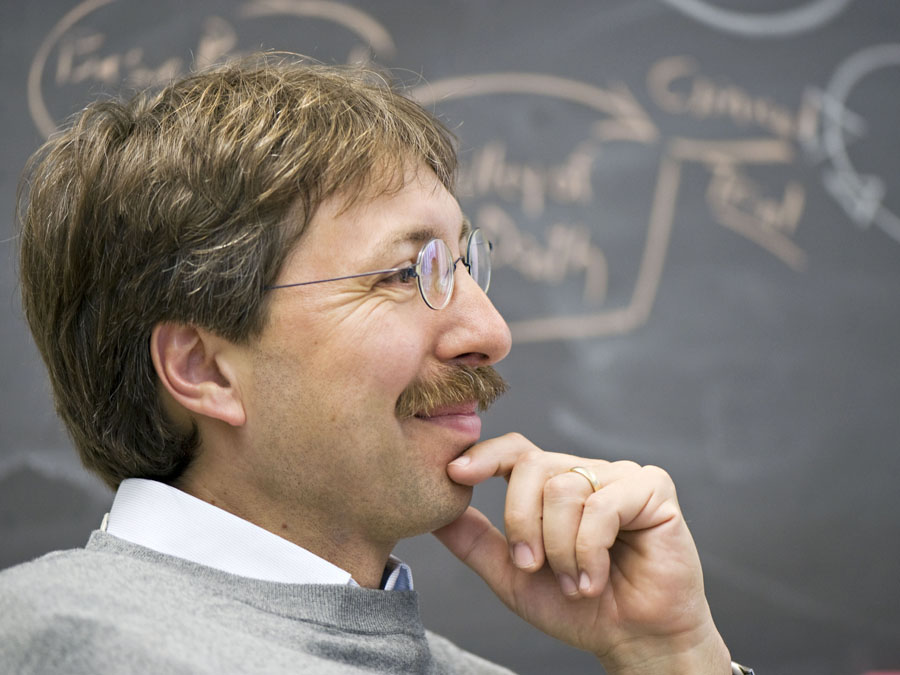Assay identifies T cells most capable of fighting infections and cancers
Improved outlook for immune-based therapies

Scientists at the Technische Universität München (TUM) have developed the first assay for living T cells that can quantify how strongly the cells' receptors bind to their targeted antigen. Optimal binding strength or "structural avidity" is thought to be the most important predictor of success in adoptive transfer therapies. Together with collaborators in Seattle, Mainz, and Berlin, the TUM researchers have successfully tested their assay in preclinical animal models very close to clinical settings and with human T cells. They published their results in the journal Science Translational Medicine.
A new key to predictability
There are countless kinds of T cells, each one expressing a single type of receptor – a surface structure capable of locking onto a particular ligand molecule that may, for example, be associated with a virus or a tumor. If a patient's immune system cannot mount an effective defense, it may be possible to fight the disease by introducing the right kind of T cell, either prepared from the patient's own cells or obtained from a donor.
But in a population of T cells equipped to recognize a particular antigen, individual T cells can vary greatly in structural avidity. A main determinant of a T cell's binding strength is the so-called "off rate" – simply put, a slower off rate indicates stronger binding – which thus predicts its likely fitness for use in adoptive transfer therapy. And that is what the TUM assay measures, directly and precisely.
The TUM technology offers three marked advantages over previous methods: It is (relatively) simple; it can be used on the surface of living T cells without harming or changing them; and it gives, for the first time, a quantitative measure of binding strength. "This is a true value that we can repeat, and we can compare individual cells on the basis of these measurements," explains Prof. Dirk Busch, director of the TUM Institute for Medical Microbiology, Immunology, and Hygiene. "Furthermore, we now have been able to show that there is indeed a correlation between these values and what the cells can do when we put them into a clinically relevant setting."
Bridging the distance from the labs to the clinic
The Munich-based team had been working on this technology and the underlying scientific questions for nearly a decade before making one crucial connection – to Seattle. With support from the TUM Institute for Advanced Study, a bridge was formed between Busch's labs and those of Prof. Stanley Riddell, a faculty member at both the Fred Hutchinson Cancer Research Center and the University of Washington.
A pioneer in cell-based therapy, Riddell had been looking for new ways to achieve higher quality and purity in cells for clinical use. Busch was seeking a partner with top-level expertise in human cell-therapy research, trials, and treatment. Together, they developed a close-knit collaboration across nine time zones that transformed both laboratories. Over the course of three years, Riddell spent months in Munich and hosted a number of Busch's postdocs and doctoral candidates, including some of the authors of the current paper, in Seattle. Weekly video conferences filled in the gaps.
As Busch describes it, though, the most significant gap they bridged was the distance from the labs to the clinic. "Stan taught us a lot about how to work with human T cells," he says, "and a lot of the data in this paper, in particular the data on human T cells, is a direct result of our TUM-IAS focus group on clinical cell processing and purification." He is optimistic about the prospects for the T-cell selection assay to play a role in clinical trials and ultimately in therapies, as well as in helping to address critical open questions about immune responses to major diseases.
"Immunotherapy is now beginning to have a major impact for patients with cancer and infectious diseases," Riddell says. "This work provides a novel approach for evaluating the qualities of T cells that may be used for cellular immunotherapy, and it facilitates the selection of those T cells that would be most effective in treating disease."
This research was supported by the German Research Foundation (DFG) through Collaborative Research Centers SFB TR36 (TP-B10/13), SFB 1054 (TP-B09), and SFB 490 (TP-E3), and through a DFG grant from the Clinical Research Group KFO 183 (individual project TP8), as well as by the TUM Institute for Advanced Study (Focus Group: Clinical Cell Processing and Purification).
Publication:
TCR-ligand k-off rate predicts protective capacity of antigen-specific CD8+ T cells for adoptive transfer. Magdalena Nauerth, Bianca Weissbrich, Robert Knall, Tobias Franz, Georg Dössinger, Jeanette Bet, Paulina J. Paszkiewicz, Lukas Pfeifer, Mario Bunse, Wolfgang Uckert, Rafaela Holtappels, Dorothea Gillert-Marien, Michael Neuenhahn, Angela Krackhardt, Matthias J. Reddehase, Stanley R. Riddell, and Dirk H. Busch. Science Translational Medicine 2013, vol. 5, issue 192.
DOI: 10.1126/scitranslmed.3005958
Contact:
Prof. Dirk Busch
Institute for Medical Microbiology, Immunology, and Hygiene
Technische Universität München
T: +49 (0)89 4140-4120
E: dirk.busch@mikrobio.med.tum.de
W: http://www.mikrobio.med.tu-muenchen.de
Technical University of Munich
Corporate Communications Center
- Patrick Regan
- presse@tum.de
- Teamwebsite